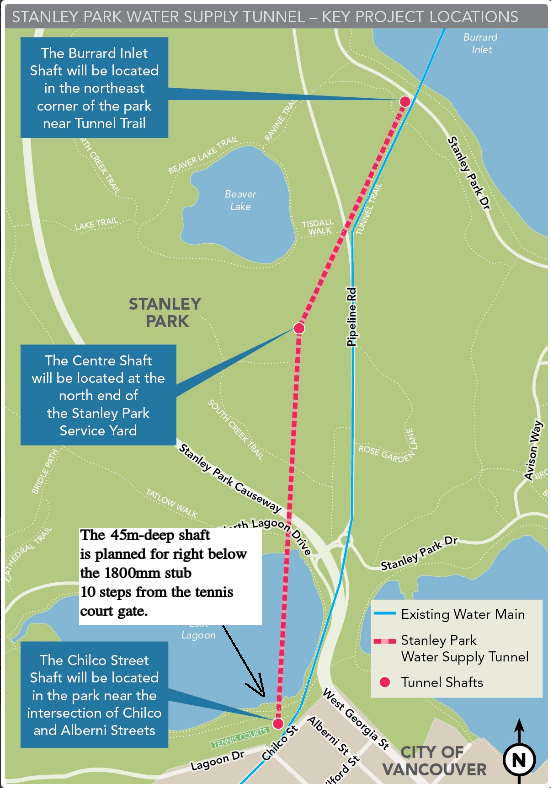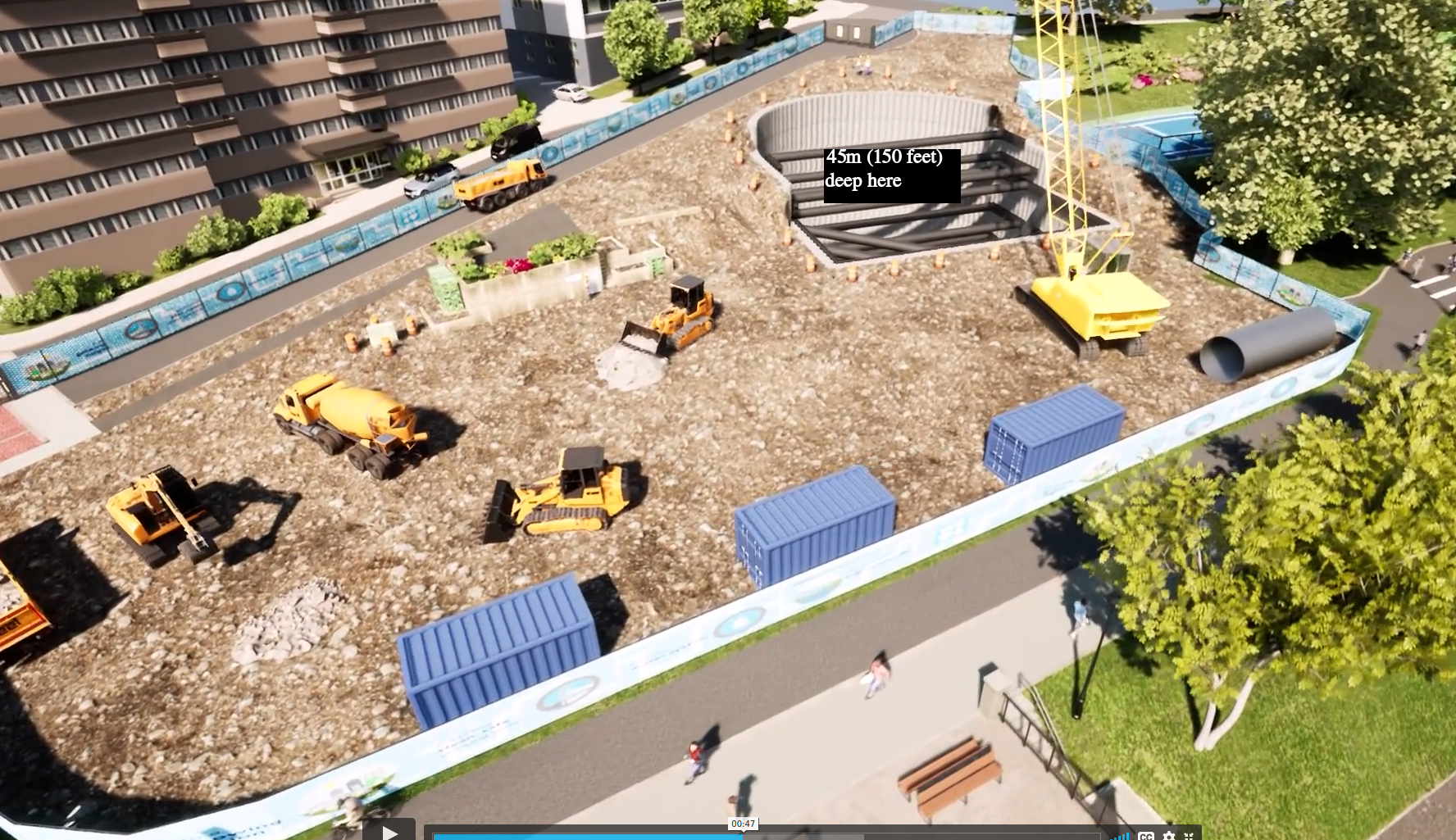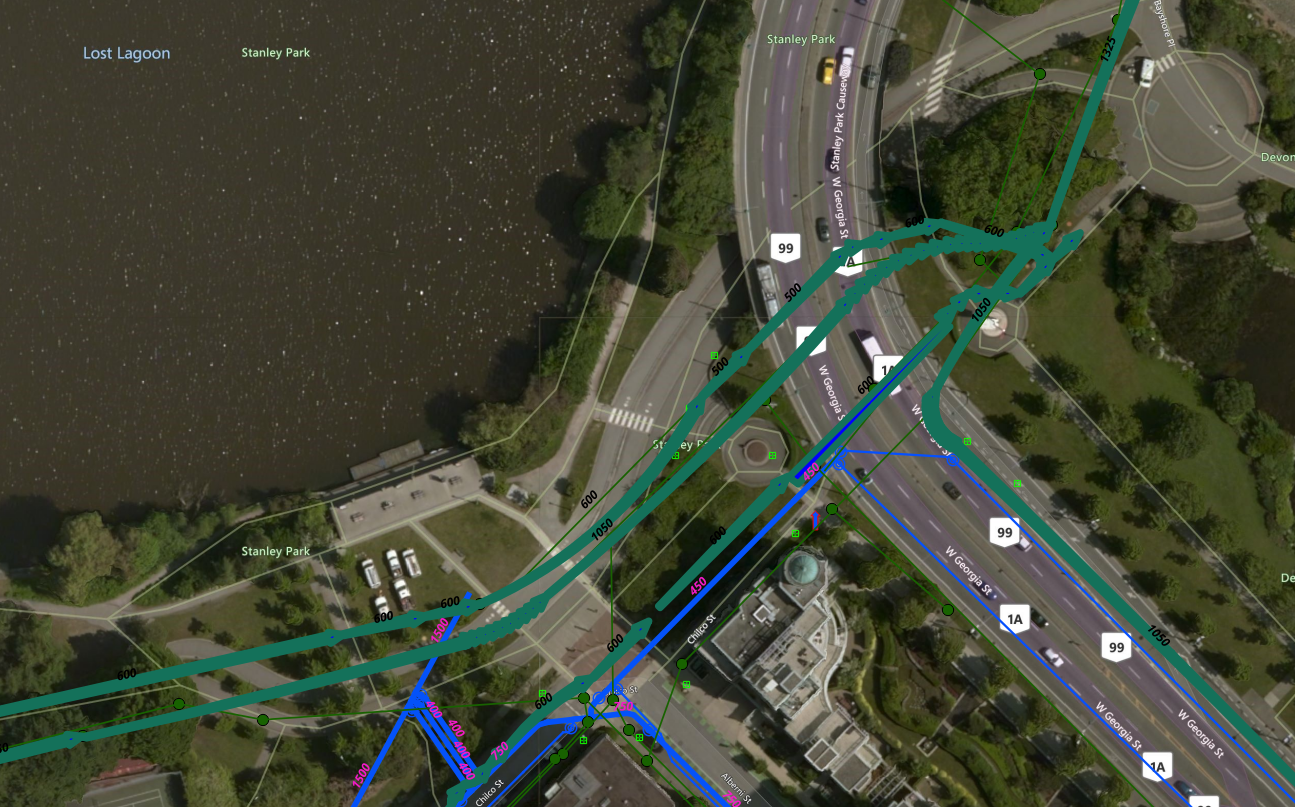
Global News did two pieces on this story, and have posted the first piece here.
The second, I managed to capture over-the-air so that a copy can be made available, at left. Just right-click on the video window to download the video file.
They have merely been preparing their part of the water network for a really major upgrade that has been planned for 45 years, since a six-foot diameter (1800mm) main was laid down to our front street, not used, awaiting a connection to Vancouver's larger water supplies from reservoirs to the north.
Metro Vancouver, the quite separate organization from City of Vancouver, that supplies water to all 21 municipalities in the Lower Mainland, will, next year, begin a huge ($300M) project to bring the largest size of water trunk main, right here, to connect with the 1800mm giant main (which can carry about 20X the water of a 900mm main) that has been waiting for it all these years.
A huge tunnel will be bored right under Burrard Inlet, surface at a maintenance vault where the Parks trucks all stay overnight in Stanley Park, then go right under Lost Lagoon (not just a little under, a hundred feet under, in bedrock) to almost our front door. Even more, to Chilco Towers front door, and many of them are concerned.
This is the Metro Vancouver diagram on the web:

I have the City of Vancouver Water Maps, and they really show how all these large mains meeting right here. The "proposed alternate location" at upper right is the suggestion of some in the neighbourhood, which Metro Vancouver states they did already consider, but had to reject (see below).

Metro Vancouver also has a short video on the web, showing that the construction site for the 45m-deep shaft down to the new water tunnel will take up a full acre (4000 sq. metres), which is to say, that whole popular, busy bit of park from the tennis courts to the cherry trees, from Chilco to the Nature House. (There will be walkways around the construction site.)
There's no question we are in for some pretty loud, heavy construction for some years. A 45m deep tunnel requires serious equipment to dig it, and of course thick concrete walls on the shaft to keep it from caving in, so that means hundreds of concrete trucks for the pour:

Naturally, everybody wishes this were not in our front yard, and wonders if there's any other possible place to do this - somewhere non-residential.
The map diagram shows a red line indicating an alternative, suggested by some in our neighbourhood, where they "merely" dig up a huge trench through the park, take the 6 foot main through the passageway under Georgia, and give it a new termination in Devonian Park across Georgia - then run the tunnel to that location instead, dig a 45m-deep shaft over there.
Metro Vancouver has a couple of answers to the suggestion:
1) It's very crowded around here, and extending that main requires getting around all the other mains. Not just water mains (blue), but major Sewer trunks are already going through that walkway under Georgia (shown in dark green):

And, 2) the whole causeway, all of Devonian Park, is built on recent "fill", soil piled up. A plaque by Lost Lagoon indicates that in the 19th century, it was a true lagoon, with salt water washing into it at high tide. Fill was brought in to create the causeway, which walled it off from the ocean and it gradually became fresh water from the park's rain runoff.
Fill is known, in an earthquake, to "liquify", basically becoming quicksand for the duration of the earthquake. Heavy infrastructure (like buildings) can sink into it - and the water mains would at least settle somewhat, probably break, taking away water service to a million people; they won't risk it.
From my own engineering background, I know that liquifaction problems can be beaten...but the price is high. You have to dig down to bedrock, and replace all the ordinary soil with compacted gravel that won't liquify. They'd have to dig down below the Pacific Ocean level to do that, which is extremely expensive.
It's been questioned how deep that fill really is, before you hit bedrock; it might not be that large an issue. At present, we just lack geological maps to dispute the Metro Vancouver assertion.
Even without that objection, building the extended main hundreds of metres, through tight spaces, to get somewhere far enough away from us, would cost many millions, and extend the timeline.
There are just over 120 units of residential closely affected by this project. (We are 18; Chilco Towers another 36; the Glass House is about 60, Stanley Lodge just 4, and across the street, only 4 floors are ever lit at night.)
Engineers considering neighbourhood impacts evaluate alternatives based on the cost per residence that has their outcome improved by the alternative. I can't estimate the cost of building anywhere but here, at less than 5 million dollars, or about $40,000 per residence helped. (I have contacted friends who built large-diameter water trunks for decades to get their rough estimate.)